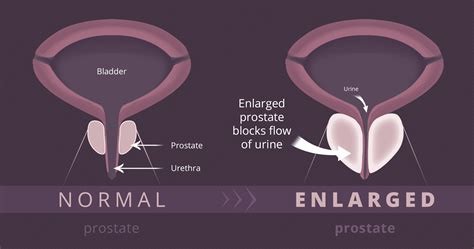Prostate adenoma or benign prostatic hypertrophy is the most common condition in males over 60 years of age. Prostate adenoma is a chronic condition caused by hormonal influence on the prostate.
The prostate is an accessory gland of the male reproductive system, located at the base of the bladder that surrounds the initial portion of the urethra. Hypertrophy of the prostate causes compression of the initial portion of the urethra, which favors the development of urinary disorders disturbing to the patient. If left untreated, benign prostatic hypertrophy can lead to recurrent urinary tract infections and retrograde damage to the upper urinary tract, represented by the ureters and kidneys.
What are the symptoms of an enlarged prostate
When a urological consultation is necessary
Currently, there are several treatment options successfully used for patients with benign prostatic hyperplasia that include both drug therapy and minimally invasive or extensive surgical correction methods.
What causes prostate adenoma
- Throughout their lives, men secrete increased concentrations of the male hormone testosterone and to a lesser extent estrogen, a specific female hormone. It is now believed that the physiological decrease in androgenic hormone production that occurs with advancing age favors the development of an imbalance between testosterone and the female hormone estrogen, which promotes prostate hypertrophy
- Dihydrotestosterone is another hormone with an important role in promoting the development of prostate cells, and it has been shown that high levels of this hormone promote the development of prostate adenoma
- A positive family history of the disease, the association with other conditions such as diabetes mellitus, obesity, heart disease and the sedentary lifestyle of the patient are risk factors frequently involved in the development of benign prostatic hypertrophy
- Alcohol consumption, smoking and certain treatments with antidepressants, sympathomimetics or antihistamines favor the development of prostate adenoma in patients with an inadequate lifestyle or who require therapy with this type of medication
Prostate adenoma can be prevented by following a set of lifestyle change recommendations that include:
- Reducing fluid intake before bedtime
- Reducing coffee and alcohol consumption
- Avoiding antihistamines, decongestants, antidepressants and diuretics
- Training pelvic floor muscles
- Preventing and treating chronic constipation
- Maintaining an active lifestyle to prevent weight gain
- Avoiding exposure to low temperatures
What are the symptoms of an enlarged prostate
Prostate adenoma-specific symptoms may occur in some cases in men younger than 40 years of age, but in most cases, 50% of them occur around the age of 60, with more than 90% of men entering their 8th decade of life experiencing prostate adenoma-specific clinical symptoms.
Symptoms of prostate adenoma usually develop gradually and include:
- Urge to urinate
- Nocturia (increased urinary frequency during the night)
- Difficulty urinating
- Weak and interrupted urinary stream
- Urinary retention-inability to empty the bladder completely
- Pain during ejaculation or urination
Complications that may occur during the evolution of benign prostatic hypertrophy are:
- Acute urinary retention or inability to urinate
- Urinary tract infections
- Bladder stones
- Bladder dysfunction due to weakened bladder muscles that can no longer contract properly to empty completely
- Kidney damage due to urine retention exerting retrograde pressure on the upper urinary tract
When a urological consultation is necessary
A urological consultation is recommended for all males who experience urinary symptoms in the form of inability to urinate, painful urination, hematuria (bloody urination), and lower abdominal pain which may be accompanied by fever and chills.

The diagnosis of prostate adenoma is established by the urologist based on information obtained from the history, clinical examination including rectal examination of the prostate and laboratory and imaging investigations.
Laboratory tests usually recommended by the urologist for the diagnosis of prostate adenoma include urinalysis, uroculture, prostate-specific antigen PSA and its free fraction free PSA. Recommended imaging investigations are transrectal ultrasound of the prostate for prostate size measurement, bladder ultrasound for determination of postmictional residual and, in certain situations, intravenous urography and urodynamic examinations.
More complex cases may require prostate biopsy under ultrasound guidance and retrograde cystoscopy to visualize the urethra and bladder, using a flexible cystoscope inserted after administration of local anesthesia.
Treatment of prostate adenoma
Treatment options for patients with prostate adenoma vary according to the size of the prostate, the age of the patient, the patient’s general health and the intensity of discomfort caused by the symptoms of the disease. If the symptoms are mild, one may choose to postpone therapy and closely monitor the patient’s progress during regular visits to the specialist.
Drug therapy used to treat patients with mild symptoms includes:
- Use of alpha-blockers to relax bladder and prostate muscles
- 5 alpha-reductase inhibitors to reduce prostate size
- A combination of the two drugs. In certain situations, preparations used to treat erectile dysfunction have been shown to be effective in reducing the symptoms of patients diagnosed with benign prostatic hypertrophy
Prostate adenoma surgery
Minimally invasive treatment is recommended for patients with moderate to severe symptoms if there has been no significant progress after specific medication. This method of treatment is definitive and is beneficial for patients with urinary tract obstruction, bladder stones or other associated kidney conditions. Currently, there are several types of minimally invasive surgery used to treat benign prostatic hypertrophy including:
- Transurethral resection of the prostate: the surgery involves removing the outer layer of the prostate to obtain a normal and uninterrupted urinary stream.
- Transurethral incision of the prostate: in this surgical treatment the doctor makes a series of small incisions in the prostate to facilitate the removal of bladder contents
- Local hyperthermia is performed by means of electrodes placed in the prostate, which are intended to destroy the inner prostatic tissue causing stricture of the urethra.
- Laser therapy destroys or removes hypertrophied prostate tissue and has fewer post-procedure risks compared to other non-laser procedures
- Prostate stents aim to achieve lateral compression on the prostate to improve urinary flow but can cause erectile dysfunction and ejaculation problems in certain situations.
Classic surgery, called open prostatectomy, is used in situations where prostatic hypertrophy is significant or the patient has other bladder or upper urinary tract conditions.
Prostate adenoma has an impact on the patient’s quality of life, so if you experience symptoms specific to the condition, contact your doctor for a specialist consultation.
References:
- Benign prostatic hyperplasia (BPH), Mayo Clinic
- Diagnosis of prostate adenoma and the relationship between the site of prostate adenoma and bladder outlet obstruction, Guang Cheng Luo, Keong Tatt Foo, Tricia Kuo, Grace Tan
- Prostate Adenoma


